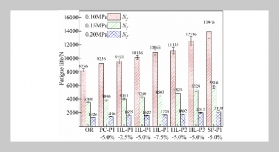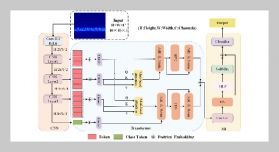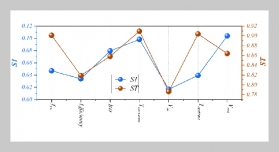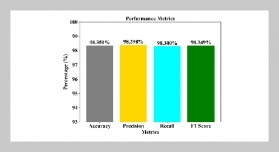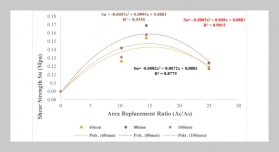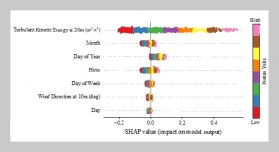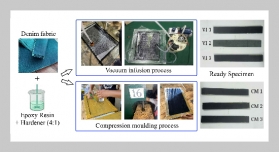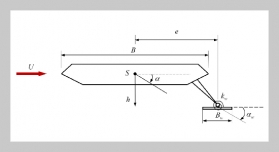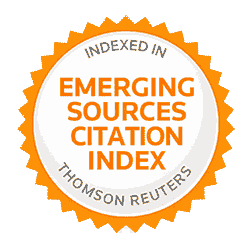- [1] J. Guo and J. Zhang, (2014) “Review on the technology of blending diluting oil in heavy oil well" Science Technology and Engineering 14: 124–132.
- [2] Z. Shuichang and Z. Guangyou, (2007) “Distribution and genesis of large and medium-sized gas fields in sedimentary basins in China" SCIENCE CHINA Earth Sciences (S2): 1–11.
- [3] L. Wenzhang. Heavy Oil Steam Injection Thermal Recovery Engineering. 1997.
- [4] Y. Shiyi and W. Qiang, (2018) “New progress and prospect of oilfields development technologies in China" Petroleum Exploration and Development 45(4): 698– 711. DOI: 10.1016/S1876-3804(18)30073-9.
- [5] G. Weizhong. “Engineering Research on the Eastern Super Heavy Oil Reservoir of the Shan Six Xi Block in Shengli Oilfield". (Thesis). 2003.
- [6] Z. Minghui, S. Wenjie, and L. Kewen, (2017) “Experimental research of nano catalyst assisted oxidization upgrading of super heavy oil" Scientia Sinica Technologica 47(2): 197–203.
- [7] Y. SUN, M. ZHOU, J. HUANG, H. JIANG, J. YANG, and C. FAN, (2020) “Research progress and development tendency of heavy oil in-situ upgrading technologies" CIESC Journal 71(9): 4141–4151. DOI: 10.11949/0438-1157.20200498.
- [8] Z. Xiaoying, C. Yukun, Z. Yunlei, Y. Xueting, H. Qingqing, Z. Zhichao, and C. Gang, (2021) “Research Progress on Heavy Oil Recovery by In-situ Aquathermolysis" Technology & Development of Chemical Industry 50(06): 30–35.
- [9] J. Hou, C. Li, H. Gao, M. Chen, W. Huang, Y. Chen, and C. Zhou, (2017) “Recyclable oleic acid modified magnetic NiFe2O4 nanoparticles for catalytic aquathermolysis of Liaohe heavy oil" Fuel 200: 193–198. DOI: 10.1016/j.fuel.2017.03.005.
- [10] M. A. Varfolomeev, R. N. Nagrimanov, A. A. Samatov, I. T. Rakipov, A. D. Nikanshin, A. V. Vakhin, D. K. Nurgaliev, and M. V. Kok, (2016) “Chemical evaluation and kinetics of Siberian, north regions of Russia and Republic of Tatarstan crude oils" Energy Sources, Part A: Recovery, Utilization, and Environmental Effects 38(8): 1031–1038. DOI: 10.1080/15567036.2015.1107866.
- [11] D. Feoktistov, G. Kayukova, A. Vakhin, and S. Sitnov, (2018) “Catalytic aquathermolysis of high-viscosity oil using iron, cobalt, and copper tallates" Chemistry and Technology of Fuels and Oils 53(6): 905–912. DOI: 10.1007/s10553-018-0880-4.
- [12] J. Hyne, P. Clark, R. Clarke, J. Koo, and J. Greidanus, (1982) “Aquathermolysis of heavy oils" Rev. Tec. INTEVEP;(Venezuela) 2(2):
- [13] Y.-j. Liu, (2001) “Fundamental research on aquathermolysis for heavy oils recovery technology" Journal of Daqing Petroleum Institute 25(3): 56–59.
- [14] P. D. Clark, J. B. Hyne, and J. D. Tyrer, (1983) “Chemistry of organosulphur compound types occurring in heavy oil sands:: 1. High temperature hydrolysis and thermolysis of tetrahydrothiophene in relation to steam stimulation processes" Fuel 62(8): 959–962. DOI: https: //doi.org/10.1016/0016-2361(83)90170-9.
- [15] P. D. Clark, N. I. Dowling, J. B. Hyne, and K. L. Lesage, (1987) “The chemistry of organosulphur compound types occurring in heavy oils: 4. the hightemperature reaction of thiophene and tetrahydrothiophene with aqueous solutions of aluminium and first-row transition-metal cations" Fuel 66(10): 1353–1357. DOI: https: //doi.org/10.1016/0016-2361(87)90181-5.
- [16] P. D. Clark, N. I. Dowling, K. L. Lesage, and J. B. Hyne, (1987) “Chemistry of organosulphur compound types occurring in heavy oil sands: 5. Reaction of thiophene and tetrahydrothiophene with aqueous Group VIIIB metal species at high temperature" Fuel 66(12): 1699–1702. DOI: https: //doi.org/10.1016/0016-2361(87)90366-8.
- [17] J. Hyne, (1986) “Aquathermolysis: a synopsis of work on the chemical reaction between water (steam) and heavy oil sands during simulated steam stimulation":
- [18] P. D. Clark and J. B. Hyne, (1984) “Chemistry of organosulphur compound types occurring in heavy oil sands: 3. Reaction of thiophene and tetrahydrothiophene with vanadyl and nickel salts" Fuel 63(12): 1649–1654. DOI: https: //doi.org/10.1016/0016-2361(84)90094-2.
- [19] P. D. Clark, J. B. Hyne, and J. David Tyrer, (1984) “Some chemistry of organosulphur compound types occurring in heavy oil sands: 2. Influence of pH on the high temperature hydrolysis of tetrahydrothiophene and thiophene" Fuel 63(1): 125–128. DOI: https: //doi.org/10.1016/0016-2361(84)90266-7.
- [20] F. Zhao, Y. Liu, T. Zhao, S. Wen, and G. Zhao, (2006) “Advance in catalytically upgrading heavy oil by aquathermolysis using hydrogen donor" Oilfield Chemistry 2(4): 379–384.
- [21] P. D. Clark and J. B. Hyne, (1984) “Steam-oil chemical reactions: mechanisms for the aquathermolysis of heavy oils" AOSTRA Journal of research 1(1): 15–20.
- [22] J. Cordova, P. Pereira, J. Guitian, A. Andriollo, A. Cirilo, and F. Granadillo. Production of oil soluble catalytic precursors. US Patent 6,043,182. 2000.
- [23] Y.-j. Liu, (2002) “Study on the aquathermolysis and viscosity reduced mechanism of heavy oil" Journal of Daqing Petroleum Institute 26(3): 95–98.
- [24] O. Muraza and A. Galadima, (2015) “Aquathermolysis of heavy oil: A review and perspective on catalyst development" Fuel 157: 219–231. DOI: 10.1016/j.fuel.2015.04.065.
- [25] C. Taoping and H. Jingbang. Petroleum Engineering. Petroleum Industry Press, 2000.
- [26] W. Chuan, L. Guang-Lun, C.-j. YAO, K.-j. SUN, P.-y. Gai, and Y.-b. CAO, (2010) “Mechanism for reducing the viscosity of extra-heavy oil by aquathermolysis with an amphiphilic catalyst" Journal of Fuel Chemistry and Technology 38(6): 684–690. DOI: 10.1016/S1872- 5813(11)60004-2.
- [27] W. Ji-Qian, L. Chuan, Z. Long-li, L. Zhao-min, and Q. Guohe, (2010) “DISPERSING EFFECT ON AMPHIPHILES ON LIAOHE ASPHALTENE AND ITS MECHANISM" Acta Petrolei Sinica (Petroleum Processing Section) 26(2): 283.
- [28] M. Siskin, A. R. Katritzky, and M. Balasubramanian, (1993) “Aqueous organic chemistry: 5. Diaryl ethers: diphenyl ether, 1-phenoxynaphthalene and 9- phenoxyphenanthrene" Fuel 72(10): 1435–1444. DOI: https: //doi.org/10.1016/0016-2361(93)90420-7.
- [29] A. R. Katritzky, S. M. Allin, and M. Siskin, (1996) “Aquathermolysis: reactions of organic compounds with superheated water" Accounts of Chemical Research 29(8): 399–406. DOI: 10.1021/ar950144w.
- [30] H.-F. Fan, Y.-j. Liu, and X.-f. Zhao, (2001) “Study on composition changes of heavy oils under steam treatment" Journal of Fuel Chemistry and Technology 29(3): 269–272.
- [31] Y. Liu, L. Zhong, S. Jiang, X.-l. Sun, and Y.-n. Gong, (2004) “Research progress of recovering heavy oil by aquathermolysis" Journal of Fuel Chemistry and Technology 32(1): 117–122.
- [32] C. Wu, J. Su, R. Zhang, and Z. Zhang, (2016) “Study on the molecular dynamics mechanism of extra-heavy oil by catalytic aquathermolysis" Energy Sources, Part A: Recovery, Utilization, and Environmental Effects 38(6): 763–768. DOI: 10.1080/15567036.2012.698369.
- [33] P. D. Clark, R. A. Clarke, J. B. Hyne, and K. L. Lesage, (1990) “Studies on the effect of metal species on oil sands undergoing steam treatments" Aostra J Res 6(1): 53–64.
- [34] Y. Chen, Y. Wang, J. Lu, and C. Wu, (2009) “The viscosity reduction of nano-keggin-K3PMo12O40 in catalytic aquathermolysis of heavy oil" Fuel 88(8): 1426–1434. DOI: 10.1016/j.fuel.2009.03.011.
- [35] K. Chao, Y. Chen, H. Liu, X. Zhang, and J. Li, (2012) “Laboratory experiments and field test of a difunctional catalyst for catalytic aquathermolysis of heavy oil" Energy & Fuels 26(2): 1152–1159. DOI: 10.1021/ef2018385.
- [36] J. Li, Y. Chen, H. Liu, P. Wang, and F. Liu, (2013) “Influences on the aquathermolysis of heavy oil catalyzed by two different catalytic ions: Cu2+ and Fe3+" Energy & fuels 27(5): 2555–2562. DOI: 10.1021/ef400328s.
- [37] Y. Wang, Y. Chen, J. He, P. Li, and C. Yang, (2010) “Mechanism of catalytic aquathermolysis: Influences on heavy oil by two types of efficient catalytic ions: Fe3+ and Mo6+" Energy & Fuels 24(3): 1502–1510. DOI: 10.1021/ef901339k.
- [38] H. Feifei and C. Bo, (2012) “Preparation and Evaluation of Oil Soluble Heavy Oil Cracking Catalysts" Liaoning Chemical Industry (3): 271–272.
- [39] L. Fangfang, Y. Shenglai, W. Xin, L. Changlin, Y. D. Dan, and C. Hao, (2014) “Study on the influencing factors of metal nickel salts on the hydrothermal cracking catalytic reaction of Niuquanhu crude oil" Oilfield chemistry 31(1): 75–78.
- [40] O. F. Al-Mishaal, M. A. Suwaid, A. A. Al-Muntaser, M. A. Khelkhal, M. A. Varfolomeev, R. Djimasbe, R. R. Zairov, S. A. Saeed, N. A. Vorotnikova, M. A. Shestopalov, et al., (2022) “Octahedral cluster complex of molybdenum as oil-soluble catalyst for improving in situ upgrading of heavy crude oil: synthesis and application" Catalysts 12(10): 1125. DOI: 10.3390/catal12101125.
- [41] J. Wang, L. Liu, L. Zhang, and Z. Li, (2014) “Aquathermolysis of heavy crude oil with amphiphilic nickel and iron catalysts" Energy & fuels 28(12): 7440–7447. DOI: 10.1021/ef502134p.
- [42] S. Shuwa, R. Al-Hajri, B. Jibril, and Y. Al-Waheibi, (2015) “Novel deep eutectic solvent-dissolved molybdenum oxide catalyst for the upgrading of heavy crude oil" Industrial & Engineering Chemistry Research 54(14): 3589–3601. DOI: 10.1021/ie5050082.
- [43] H. Wang, Y. Wu, L. He, and Z. Liu, (2012) “Supporting tungsten oxide on zirconia by hydrothermal and impregnation methods and its use as a catalyst to reduce the viscosity of heavy crude oil" Energy & fuels 26(11): 6518–6527. DOI: 10.1021/ef301064b.
- [44] C. Li, L. Su, Q. Li, X. Wang, X. Li, J. Yang, and Z. Zhang, (2016) “Enhanced Heavy Oil Recovery in Mild Conditions by SO42-/TiO2-Zr O2 Solid Superacid Prepared by Different Methods" Journal of Nanomaterials 2016: 7436057. DOI: 10.1155/2016/7436057.
- [45] M. Khalil, R. L. Lee, and N. Liu, (2015) “Hematite nanoparticles in aquathermolysis: A desulfurization study of thiophene" Fuel 145: 214–220. DOI: 10.1016/j.fuel.2014.12.047.
- [46] L. Yuan, X. Wang, K. Zhao, H. Pan, Q. Li, J. Yang, and Z. Zhang, (2017) “Effect of reaction temperature and hydrogen donor on the Ni0@ graphene-catalyzed viscosity reduction of extra heavy crude oil" Petroleum Science and Technology 35(2): 196–200. DOI: 10.1080/10916466.2016.1241805.
- [47] O. Rivas, R. Campos, and L. Borges. “Experimental evaluation of transition metals salt solutions as additives in steam recovery processes”. In: SPE Annual Technical Conference and Exhibition. OnePetro. 1988. DOI: 10.2118/18076-MS.
- [48] P. D. Clark and M. J. Kirk, (1994) “Studies on the upgrading of bituminous oils with water and transition metal catalysts" Energy & fuels 8(2): 380–387.
- [49] L. Zhong, Y. Liu, H. Fan, and S. Jiang. “Liaohe extraheavy crude oil underground aquathermolytic treatments using catalyst and hydrogen donors under steam injection conditions”. In: SPE international improved oil recovery conference in Asia Pacific. SPE. 2003, SPE–84863. DOI: 10.2118/84863-MS.
- [50] F. Zhao, Y. Liu, Z. Fu, and X. Zhao, (2014) “Using hydrogen donor with oil-soluble catalysts for upgrading heavy oil" Russian Journal of Applied Chemistry 87: 1498–1506. DOI: 10.1134/S1070427214100164.
- [51] F. Zhao, J. Huang, M. Li, S. Liu, Y. Guo, and P. Zhang, (2015) “Study on hydrogen donors catalytic upgrading of heavy oil using ultradispersed catalyst" J. Chem. Pharm. Res 7(4): 1370–1377.
- [52] C. Ovalles, E. Filgueiras, A. Morales, C. E. Scott, F. Gonzalez-Gimenez, and B. P. Embaid, (2003) “Use of a dispersed iron catalyst for upgrading extra-heavy crude oil using methane as source of hydrogen" Fuel 82(8): 887– 892. DOI: 10.1016/S0016-2361(02)00406-4.
- [53] L. Hendraningrat, Y. Souraki, and O. Torsœter. “Experimental investigation of decalin and metal nanoparticles-assisted bitumen upgrading during catalytic aquathermolysis”. In: SPE/EAGE European unconventional resources conference and exhibition. OnePetro. 2014. DOI: 10.2118/167807-MS.
- [54] S. Maity, J. Ancheyta, and G. Marroquín, (2010) “Catalytic aquathermolysis used for viscosity reduction of heavy crude oils: A review" Energy & Fuels 24(5): 2809–2816. DOI: 10.1021/ef100230k.
- [55] J. G. Weissman, (1997) “Review of processes for downhole catalytic upgrading of heavy crude oil" Fuel Processing Technology 50(2-3): 199–213. DOI: 10.1016/S0378-3820(96)01067-3.
- [56] J. Weissman, R. Kessler, R. Sawicki, J. Belgrave, C. Laureshen, S. Mehta, R. Moore, and M. Ursenbach, (1996) “Down-hole catalytic upgrading of heavy crude oil" Energy & fuels 10(4): 883–889. DOI: 10.1021/ef9501814.
- [57] Q. JIANG, Y. Hongjuan, P. Jingjun, et al., (2020) “Preliminary discussion on the present situation and development direction of heavy oil recovery technology" Special Oil & Gas Reser-voirs 27(6): 3–6.
- [58] J. Jialing, S. Xiaole, and F. Huichun. “Study on the properties of thermally recovered crude oil in Shanjiasi”. In: Proceedings of Heavy Oil Thermal Recovery Technology. Beijing: Petroleum Industry Press, 1993, 32 35.
- [59] C. Yanbin. “Study on Molecular Structure Characteristics of Fractions and Catalytic Aaquathermolysis of Shengli Heavy Oil". (Thesis). 2017.
- [60] Z. Wei. “Research and Application for Heavy Oil by Aquathermolysis Visbreaking Catalyst System". (Thesis). 2012.
- [61] F. Hongfu, L. Yongjian, Z. Xiaofei, and Z. Liguo, (2001) “First Field Experimental Of Recovery Heavy Oil Using Down-hole Catalytic Method In China" Oil Drilling & Production Technology (03): 42–44+85. DOI: 10.13639/j.odpt.2001.03.017.
- [62] Y.-j. Liu, (2002) “In situ experiments of heavy oil recovery by aquathermolysis in Liaohe oilfield" Journal of Daqing Petroleum Institute 26(3): 99–101.
- [63] S. Wen, Y. Zhao, Y. Liu, and S. Hu. “A study on catalytic aquathermolysis of heavy crude oil during steam stimulation”. In: SPE International Conference on Oilfield Chemistry? SPE. 2007, SPE–106180. DOI: 10.2118/106180-MS.
- [64] B. Li, (2004) “Experiments of in-situ upgrading heavy oil by means of catalyst and hydrogen donor" Journal of Daqing Petroleum Institute 28: 24–26.
- [65] Y. Chen, Y. Wang, C. Wu, and F. Xia, (2008) “Laboratory experiments and field tests of an amphiphilic metallic chelate for catalytic aquathermolysis of heavy oil" Energy & Fuels 22(3): 1502–1508. DOI: 10.1021/ef8000136.
- [66] L. Jian. “Catalytic viscosity reducer with dual structure of hydrogen donor and catalytic center and its viscosity reduction mechanism". (Thesis). 2014.
- [67] M. M. Rehman and M. Meribout, (2012) “Conventional versus electrical enhanced oil recovery: a review" Journal of Petroleum Exploration and Production Technology 2: 157–167. DOI: 10.1007/s13202-012-0034-x.
- [68] A. V. Vakhin, M. A. Khelkhal, I. I. Mukhamatdinov, R. E. Mukhamatdinova, A. Tajik, O. V. Slavkina, S. Y. Malaniy, M. R. Gafurov, A. R. Nasybullin, and O. G. Morozov, (2022) “Changes in Heavy Oil Saturates and Aromatics in the Presence of Microwave Radiation and Iron-Based Nanoparticles" Catalysts 12(5): 514. DOI: 10.3390/catal12050514.
- [69] N. Bjorndalen and M. Islam, (2004) “The effect of microwave and ultrasonic irradiation on crude oil during production with a horizontal well" Journal of petroleum Science and Engineering 43(3-4): 139–150. DOI: 10.1016/j.petrol.2004.01.006.
- [70] S. Xueqiong, W. Zhao, and S. Wenlei, (2012) “Wax prevention and viscosity reduction technology based on high-frequency alternating composite magnetic field" oilgas field surface engineering 31(6): 15–16.
- [71] D. Yuxi, Z. Xiaojun, and K. Dejing, (2017) “Research on Improving Crude Oil Viscosity Reducing Parameters Based on Electromagnetic Technology" Contemporary Chemical Industry 46(8): 1600–1603.



